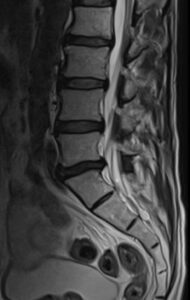
Dr. Petya Stefanova
Teacher
Assistant at the Faculty of Medicine at Sofia University and resident physician in Neurology at Sofiamed University Hospital.
Questions
Summaries
Videos
Audios
Хофман и Трьомнер са:
November 14, 2023
При пациент с остър инсулт рефлексът Бабински:
November 14, 2023
При тежка полирадикулопатия (синдром на Гилен-Баре) се наблюдава:
November 14, 2023
Which of the following reflexes is typically affected in polyradiculoneuropathy (Guillain-Barré syndrome)?
November 13, 2023
Which statement best describes the Babinski reflex in acute stroke?
November 13, 2023
Hoffman and Tromner are:
November 13, 2023
What is the significance of a positive Babinski reflex in a neurological examination of the right foot?
November 13, 2023
In which of the following conditions is generalized hyperreflexia commonly observed?
November 13, 2023
Which of the following items typically determine a tendon reflex as pathological hypereflexia in a clinical examination?
November 13, 2023
What is anisoreflexia in the context of neurology?
November 13, 2023
Which of the following reflexes can be observed in healthy babies?
November 13, 2023
Към екстрапирамидната система се отнасят пътища, които преминават:
October 31, 2023
What is a key difference between the pyramidal and extrapyramidal pathways in the central nervous system?
October 31, 2023
Кои симптоми насочват към засягане на екстрапирамидната система?
October 31, 2023
What are the primary functions of the extrapyramidal system in the central nervous system?
October 31, 2023
What does the term “aphasia” refer to?
October 31, 2023
Какво означава терминът “афазия”?
October 31, 2023
Какво означава терминът “апраксия”?
October 31, 2023
What is the definition of the medical term “apraxia”?
October 31, 2023
Какво означава терминът “агнозия”?
October 31, 2023
Parkinson’s Disease Differential Diagnosis Questionnaire
October 18, 2024
Role of the Direct and Indirect Pathways in the Extrapyramidal System: Balancing Motor Control
October 14, 2024

The Unified Parkinson’s Disease Rating Scale (UPDRS)
October 11, 2024
Lewy Body Dementia with Parkinsonism versus Parkinson’s Disease
October 11, 2024

Protective Factors for Parkinson’s Disease: Physical Activity, Smoking, and Caffeine
October 6, 2024
Alpha-Synuclein vs. Tau Protein: A Comparative Overview
October 6, 2024
Diet Recommendations for Patients with Multiple Sclerosis
August 6, 2024
Wallenberg Syndrome (Lateral Medullary Syndrome)
August 6, 2024
No videos found
Fake Smiles, Real Damage: How Digital Joy Breeds Fear and Anger
May 3, 2025
Understanding Neuropsychological Evaluations: What to Expect
February 25, 2025
Невропсихологическо изследване – индикации, провеждане и резултати
February 24, 2025
Невропсихологическо изследване – индикации, провеждане и резултати
February 24, 2025





